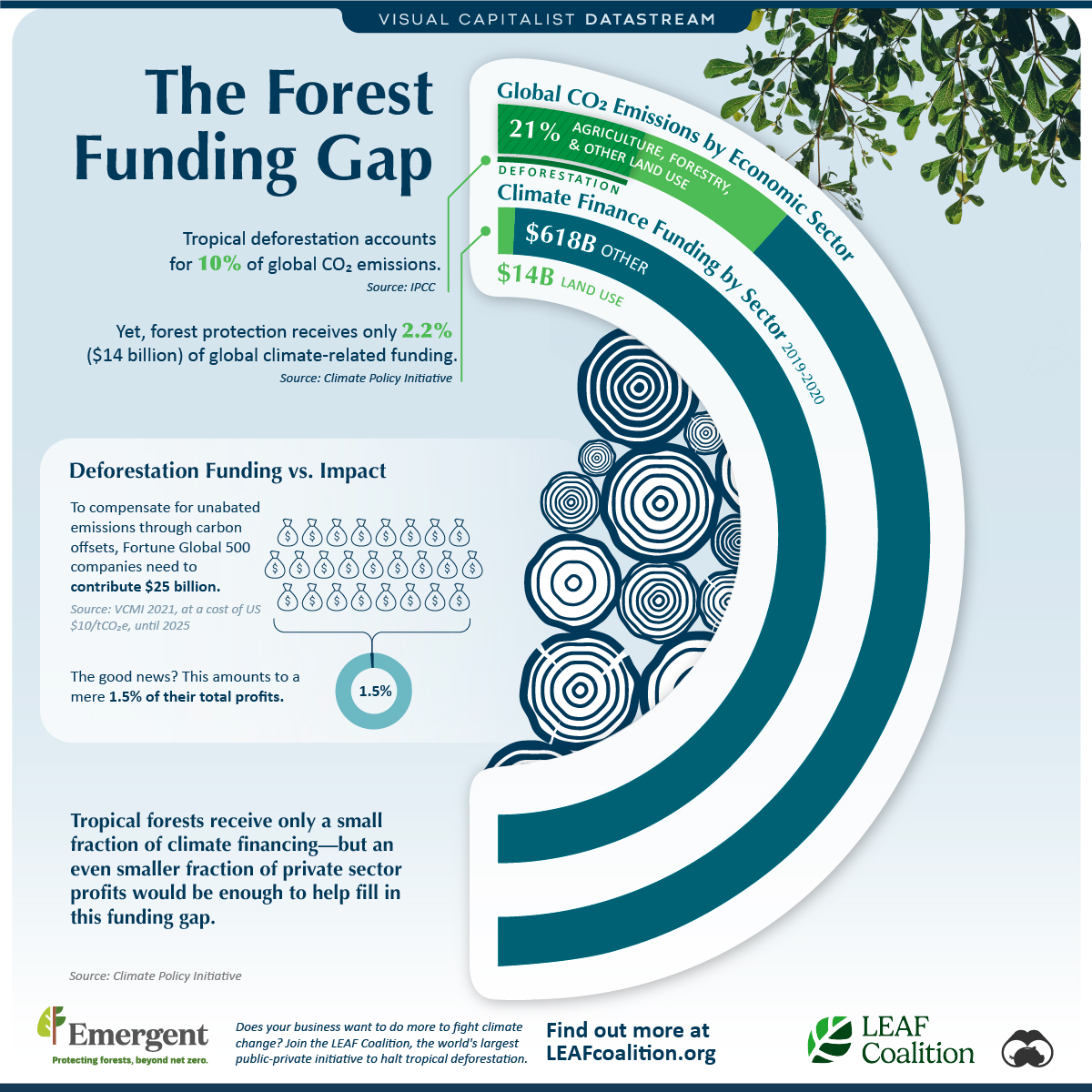
The following content is sponsored by The LEAF Coalition
The Briefing
- Deforestation accounts for 10% of global carbon emissions
- Deforestation receives just 2.2% of climate funding
The Forest Funding Gap
Climate change has been referred to as modern day civilization’s greatest challenge. And stopping deforestation is an important step in the battle to stop rising global temperatures. Yet, when you look at the amount of climate funding earmarked for deforestation, something doesn’t add up.
This graphic from The LEAF Coalition looks at the state of global deforestation and compares how much climate funding it receives relative to its global CO2 emissions.
Deforestation’s Role in Global Emissions
Protecting our forests and protecting the climate are one in the same. In fact, the data reveals that tropical deforestation accounts for 10% of global CO2 emissions.
What’s more, these levels of emissions exceed that of all individual countries except for the U.S. and China. Despite this, climate funding towards deforestation only accounts for $14 billion of the over $618 billion available, representing a small 2.2% slice of the total.
This is especially problematic when considering a forest’s carbon stock and carbon sequestration capabilities. Here’s how different forests across the globe compare when looking at gigatonnes of carbon stock.
| Ecosystem | Estimated Carbon Stock (Gt) | Annual Loss Rate |
|---|---|---|
| Tropical moist forests | 295 Gt | 0.45% |
| Boreal forests | 283 Gt | 0.18% |
| Temperate broadleaf forests | 133 Gt | 0.35% |
| Temperate conifer forests | 66 Gt | 0.28% |
| Tropical dry forests | 14 Gt | 0.58% |
| Mangroves | 7.3Gt | 0.13% |
A carbon stock or carbon pool refers to a system that can store carbon and take it out of the atmosphere. Forests are used to offset plenty of carbon emissions, and by some estimates, it would cost $25 billion for additional carbon offsets to match and compensate for unabated emissions.
This is crucial because unabated emissions are those who’s harm are not reduced from carbon reduction methods. While this may sound like a lot, it’s equivalent to just 1.5% of the profits from Fortune Global 500 companies.
Altogether, approximately 30% of global emissions are absorbed by forests each year. Despite this, 3.75 million hectares of tropical primary rainforest were lost in 2021, equivalent to 600 football pitches per hour.
Turning The Page
It’s practically impossible to effectively tackle climate change without addressing deforestation. The broader agriculture, forestry and other land use category (which includes deforestation) accounts for 21% of all global CO2 emissions.
Swift action is required in order to slow deforestation and decelerate rising average temperatures. See how The LEAF Coalition, a public-private initiative, is accelerating climate action by providing results-based finance to countries committed to protecting tropical forests.
The post Visualizing the Forest Funding Gap Relative to Emissions appeared first on Visual Capitalist.